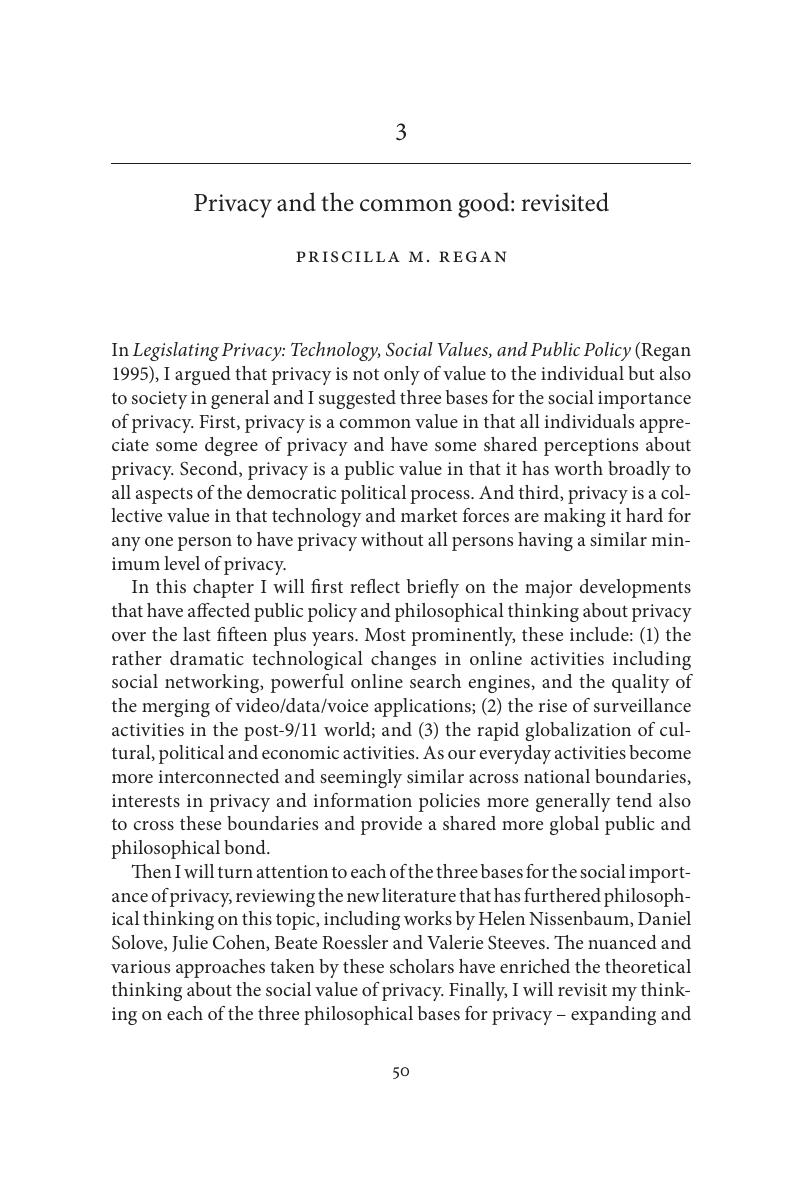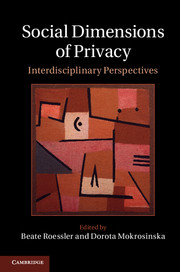Book contents
- Half title page
- Title page
- Copyright page
- Contents
- Contributors
- Book part
- Glossary
- Table of cases
- Table of statutes
- Introduction
- Part I The social dimensions of privacy
- 1 Privacy: the longue durée
- 2 Coming to terms: the kaleidoscope of privacy and surveillance
- 3 Privacy and the common good: revisited
- 4 The meaning and value of privacy
- Part II Privacy: practical controversies
- Part III Issues in privacy regulation
- Index
- References
3 - Privacy and the common good: revisited
from Part I - The social dimensions of privacy
Published online by Cambridge University Press: 05 July 2015
- Half title page
- Title page
- Copyright page
- Contents
- Contributors
- Book part
- Glossary
- Table of cases
- Table of statutes
- Introduction
- Part I The social dimensions of privacy
- 1 Privacy: the longue durée
- 2 Coming to terms: the kaleidoscope of privacy and surveillance
- 3 Privacy and the common good: revisited
- 4 The meaning and value of privacy
- Part II Privacy: practical controversies
- Part III Issues in privacy regulation
- Index
- References
Summary

- Type
- Chapter
- Information
- Social Dimensions of PrivacyInterdisciplinary Perspectives, pp. 50 - 70Publisher: Cambridge University PressPrint publication year: 2015
References
- 13
- Cited by



